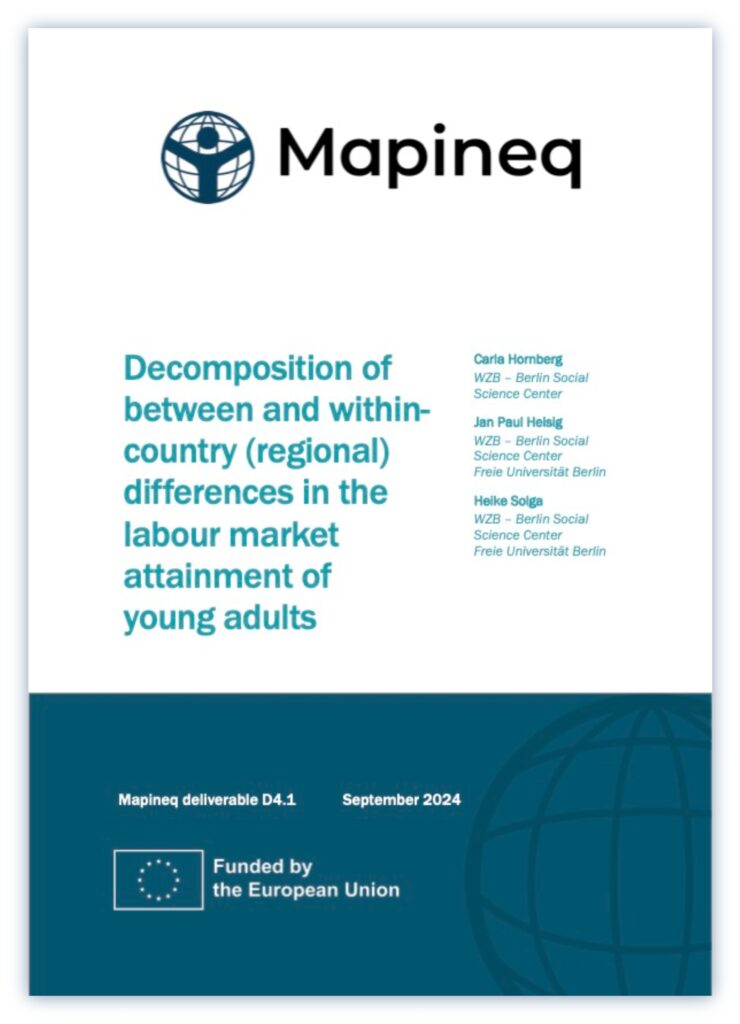Decomposition of between and within-country (regional) differences in the labour market attainment of young adults
This report provides insights into inequalities in school-to-work transitions (hereafter STWT) by exploring the role of contextual and individual sources of heterogeneity of young people. We examine differences between 27 European countries and, for 14 of them, also within countries across major socio-economic (NUTS 1) regions, using EU-SILC data from 2021. We map success and inequalities in the labour market outcomes of young adults using six indicators – labour market integration with risks of unemployment and NEET, and occupational attainment, and as related outcomes, income in/security with young adults’ disposable income and poverty risks, and young adults’ life satisfaction. We explore whether labour market integration and related outcomes have spillover effects on other life domains, i.e. whether they are associated with other transitions to adulthood, such as economic independence (leaving parental home) or family formation (entry into marriage/cohabitation and parenthood). We also examine the interaction with young adults’ health, a factor that is often missing in STWT research.
By Carla Hornberg, Jan Paul Heisig and Heike Solga.

The most important individual-level factors are young adults’ educational attainment, health and family living arrangements (defined by partnership, parenthood, living in or out of the parental home). Once these differences are taken into account, there are only small gender differences in the six STWT outcomes.

Differences in these socio-demographic and socio-economic profiles of young adults account for substantial part of country-level and regional variation in the labour market attainment and well-being.

Young adults living in rural areas are severely disadvantaged compared to their urban counterparts. Moreover, labour market integration is influenced by factors from different policy areas at both the national and regional level, such as education, labour market and economic conditions, and family and health.

